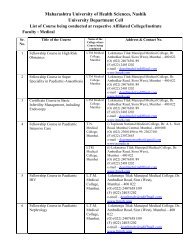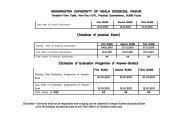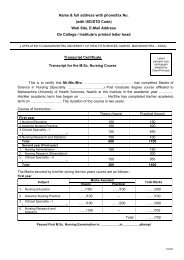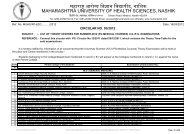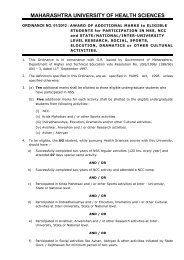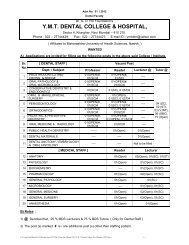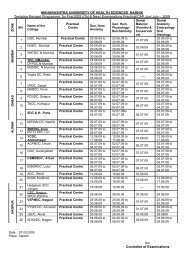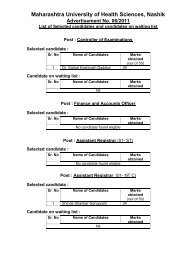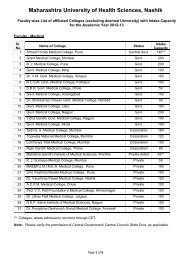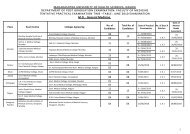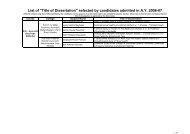Unit I
Unit I
Unit I
You also want an ePaper? Increase the reach of your titles
YUMPU automatically turns print PDFs into web optimized ePapers that Google loves.
Thymus: It is the central lymphoid organ. It feeds the T lymphocytes to all the peripheral lymphoid organs.It is bilobed and its shape is like a‘thyme leaf`. This lymphoid organ is covered by a capsule which sendsincomplete septa into the substance dividing it into lobes. Each lobe shows an outer darker with an innerpaler medulla. Presence of Hassall’ s corpuscles is the main feature of the slide.The cortex is concentrated with the lymphocytes while the more central medulla is pale and containsless lymphocytes.The epithelial cells (not seen in H & E) form a network by their processes, which arelinked with the desmosomes. Outer cortex shows the large lymphocytes and rapid mitosis give origin to thesmall lymphocytes, which are in the deeper zone of the cortex. The cortical nodules are absent so that thewhole the cortex is uniformly dark violet. The lobulation of the thymus affects only the cortex; the medullaof the adjacent lobules is confluent. A completely isolated lobule containing a central core of medulla is anartifact due to the plane of the section.The plasma cells are never seen in the cortex as the B lymphocytes never come across any antigen inthe thymus due to blood-thymic barrier. However the plasma cells may be seen in the medulla. All thelymphoid organs have a reticulum formed by the reticular fibres but the thymus has a reticulum formed bythe epithelial cells. The macrophages may be seen in the capsule, at the corticomedullary junction and inthe medulla. Each Hassall’ s corpuscle has a central core formed by the epithelial cells that have undergonedegeneration. It is a pink staining hyaline mass around which there are concentrically arranged epithelialcells, stained bright pink with H & E stain. Hassall’s corpuscles increase in number and size as age advances.These are keratinised epithelial cells.Blood-Thymic barrier: The arterioles from the corticomedullary junction ascend into the cortex where theyform the anastomosing capillary arcades from which the capillaries return to corticomedullary junction anddrain into the venules of medulla. There is a continuous epithelium surrounding the capillaries of the cortexformed by epithelial cells. There is a space between the capillary pericytes and the epithelial membrane.Both the capillary endothelium and epithelial cells have separate basement membranes. The flow is towardsthe medulla and thus the antigen is washed towards the medulla and the cortex is protected from antigen.The component of the barrier are as follows:i) Capillary endothelium iv) Epithelial basement membraneii) Basement membrane v) Epithelial celliii) Perivascular spaceNotes:51



